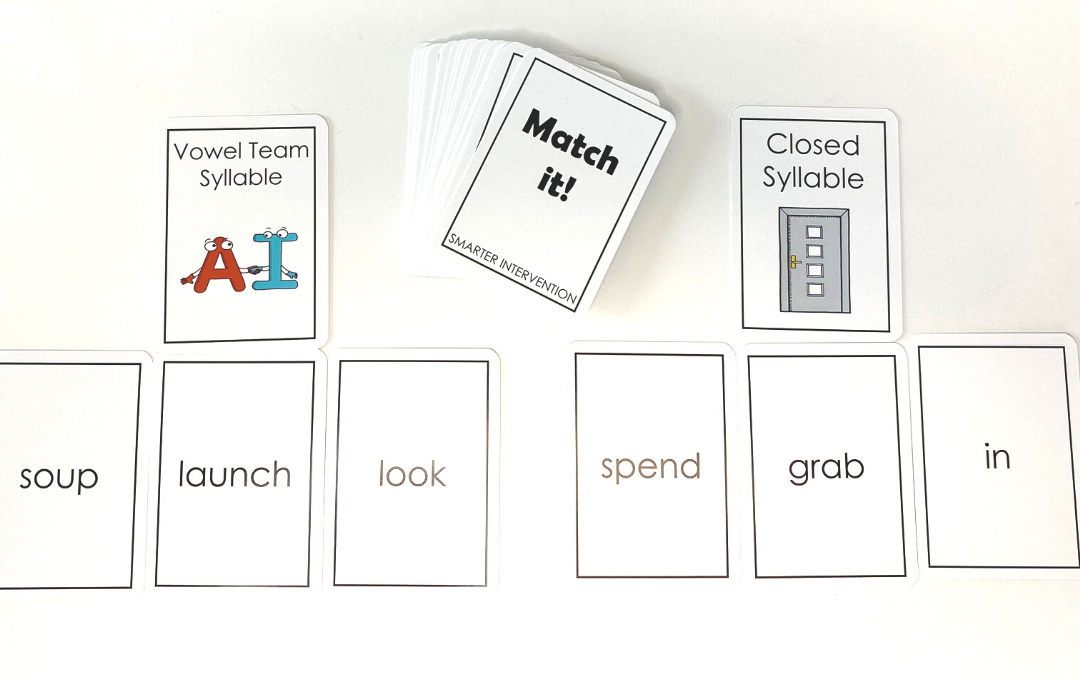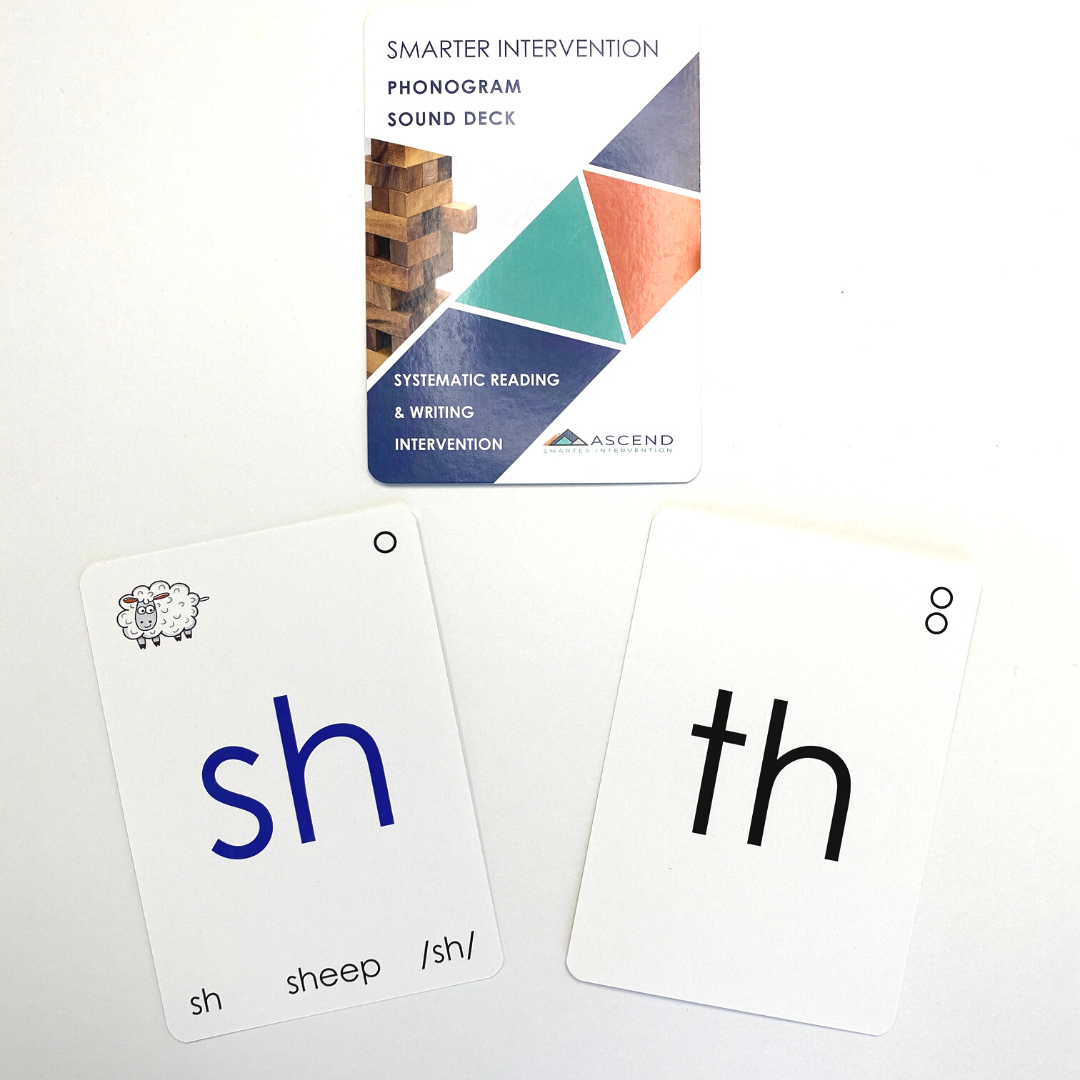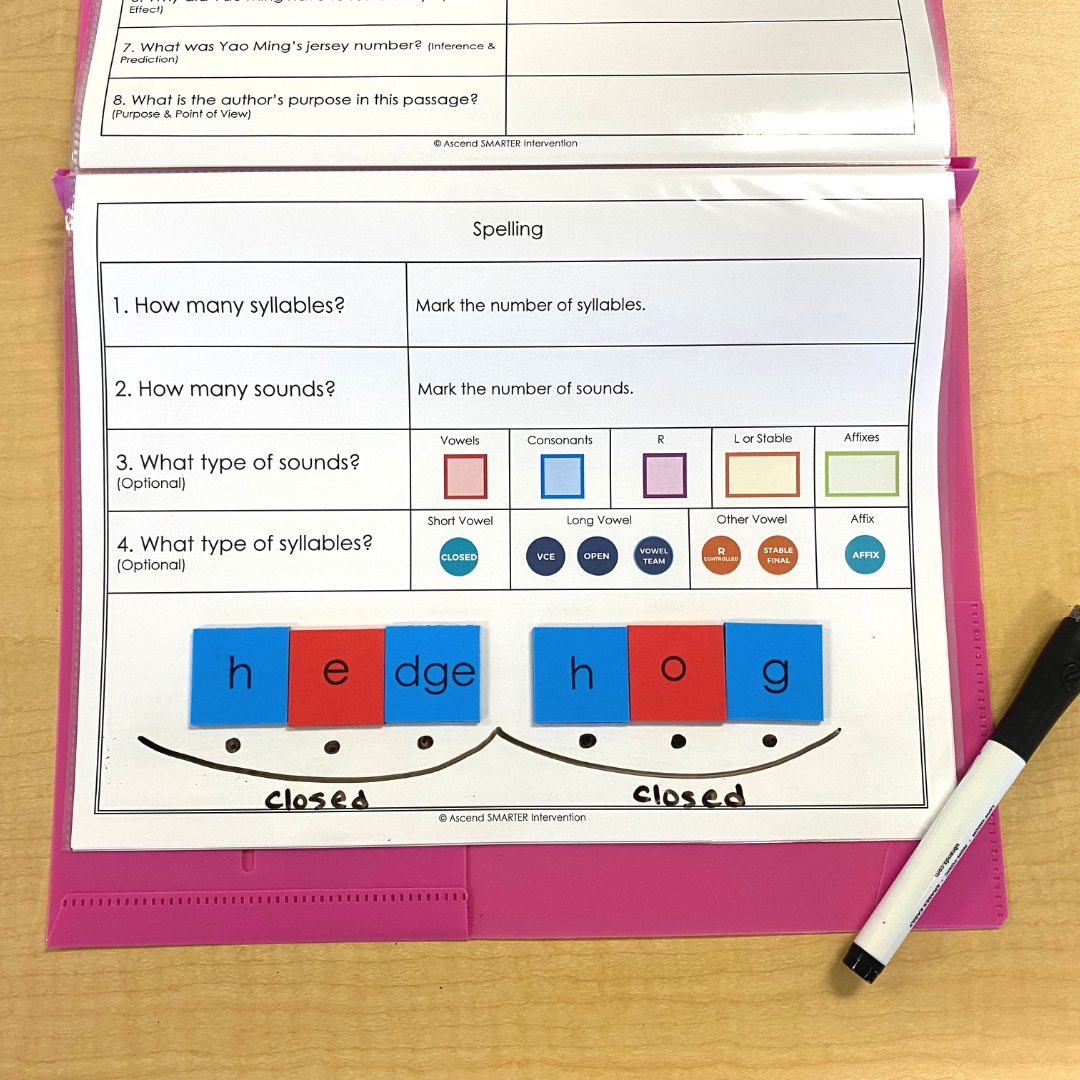How to Systematically Review Previously Learned Material
When it comes to literacy instruction, there are a lot of rules and skills to introduce to our students.
As we progress through our lessons and introduce new concepts, it is important that we check to make sure students are retaining previously taught information.
So the question is, how can we systematically review previously learned material so that these concepts stay fresh for our students? Chances are, you’re already pulling in some sort of review into your sessions. Today we want to show you a few of our favorite ways to do this!
How to systematically review previously learned material
Review the 6 Syllable Types
If you haven’t read our blog about the six syllable types yet, you can find it here.
In it, we discuss why we organize our scope & sequence according to the syllable types. As we progress through our lessons, it is important that we review syllable types students have already worked on.
During this portion of the lesson, we’ll either build a word or have our students build a word and explain why the word fits into the specific syllable type. An example of this would be building the word “chop” and asking the student to explain why this is a closed syllable word (because the ‘p’ is blocking the vowel in, making the vowel say its short sound).
Review Previously Learned Material Using a Game!
Games are another great way to review material that students have already learned. They can act as a quick warm-up at the start of your lesson or as an engagement strategy to keep students practicing their skills in a fun way.
You can use games to review syllable types by having students sort word cards into different categories as you see in the picture. This is also a great way to reinforce students’ decoding skills!
You can grab this Syllable Type Match-It Game here.
Review during the Sound Drill and Auditory Drill
When we do our sound drill at the beginning of the lesson, we make sure to pull in all the phonogram cards that our students have been exposed to! This is a quick and easy way to make sure these rules stay fresh in their minds. For example, if students have recently learned SH and TH (or if we know these are patterns they struggle with!) we’ll add them into the drill so we have the opportunity to review them with students.
Before spelling, we also do an auditory drill where we provide students with a sound and ask them to tell us the letters/patterns that can make that sound.
This is a great way to reinforce their sound-symbol knowledge. We can also review specific rules during this activity. For example, if we ask them to give us 4 ways to make the /r/ sound, they would write ‘er,’ ‘ir,’ ‘ur,’ and ‘r.’ We could then ask them which is the most common way to make the /r/ sound, which is the least common way to make the /r/ sound, which of those can be used as a suffix, etc.
Review Spelling Words
In every lesson, we give our students spelling words that include previously learned rules. Again, this is a great way for us to keep some of these concepts fresh for our students, as well as be able to reiterate rules or make corrections with our students if needed.
For example, if the student spells the word milk correctly, we might say something like, “Awesome, I love that you used a ‘k’ to make the /k/ sound at the end of that word! Why didn’t you use a -ck?” Hopefully, at that point, our students could tell us that they didn’t use a -ck because the /k/ sound was touching a consonant, not a short vowel.
This is also a great place to pull in syllable-type review!
Review in Writing Practice and Applied Skills
Another final place for us to review previously learned concepts is when our students are writing sentences, or working on applied skills. When our students are writing, we typically have them check for capitals, organization (both appearance and meaning), punctuation, and spelling. These sentences are likely going to have review words that we’ve already learned. When our students spell these words correctly, we like to bring attention to what they did correctly (e.g. “Nice job adding an ‘e’ to the end of ‘give’! Why did we need that ‘e’ there again?”) Again, this gives the student a chance to explain a rule that we’ve already learned.
Putting It All Together -
These are just a few ideas of ways you can integrate systematic review into your lessons. Are there other ways that you are already doing this? Comment below to share other ideas!
If you are looking for games and other materials you can use to review skills in your lessons - you can grab hundreds of them in our 5 Core Components of Literacy Activity Library. Use the button below to learn more and get 50% off your first month.




